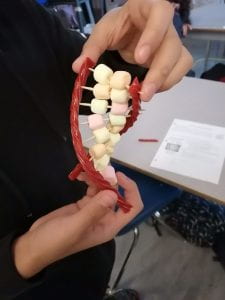Essential question: How does Huntington’s affect someone’s daily life and how did u learn you have Huntington’s disease
1
- A) How does Huntington’s affect someone’s daily life
- B) How did u learn u have Huntington’s disease
- C) What were the sign and symptoms of you having Huntington’s disease
2
- A) I would have a better understanding of how he manages with his daily living. Does he need support.
- B) This can be helpful to the family or people who has a family history of Huntington’s disease so they have to watch out for the first symptoms and get checked out at the doctors
Base off of the information i read from the websites
A person with Huntington’s experiences poor coordination and uncontrolled movements physical, cognitive and emotional symptoms. There are three main symptoms to Huntington’s, physically you will notice weight loss and have a difficult time walking, talking and swallowing. Cognitively start noticing difficulty planning and focusing and emotionally you will have anxiety, and depression.
I believe that I have a better understanding of Huntington’s and that the information that I’ve read I have clear understanding of the disease its effect to people and their family. The researched helped me understand what can HD do to a person and how it can be detected early ages by knowing the symptoms and can seek medical help therefore for early testing.
Critical questions
- What is Huntington’s disease
- When does it effect a person
- A possible treatment for HD
- What are signs symptoms for HD
I used different websites to come up with information’s
4. I verified the sites by comparing them and mainly using the verified hospital org.
4. author for neuroscientifcally Walker FO. Huntington’s disease. Lancet. 2007 Jan 20;369(9557):218-28.
I couldn’t find for the other 2
5. I think its a challenge for me because i am not familiar to medical topics and i think i can improve by having more information about the disease
- Links: https://www.neuroscientificallychallenged.com/blog/know-your-brain-huntingtons-disease https://www.alz.org/alzheimers-dementia/what-is-dementia/types-of-dementia/huntington-s-disease https://www.sciencedaily.com/releases/2019/10/191021114920.htm








 I predict that a potato will charge the light the best. Because I’ve watched other people test fruits and vegetable and most conclusions came out as a potato
I predict that a potato will charge the light the best. Because I’ve watched other people test fruits and vegetable and most conclusions came out as a potato